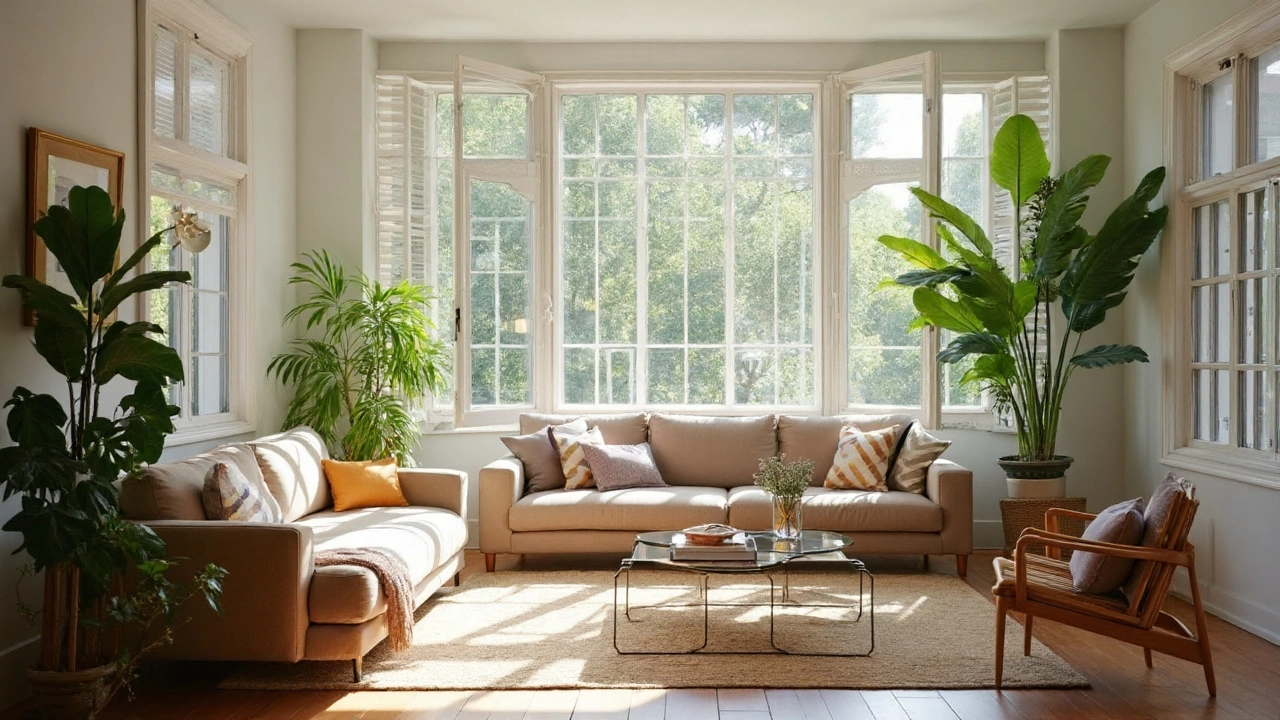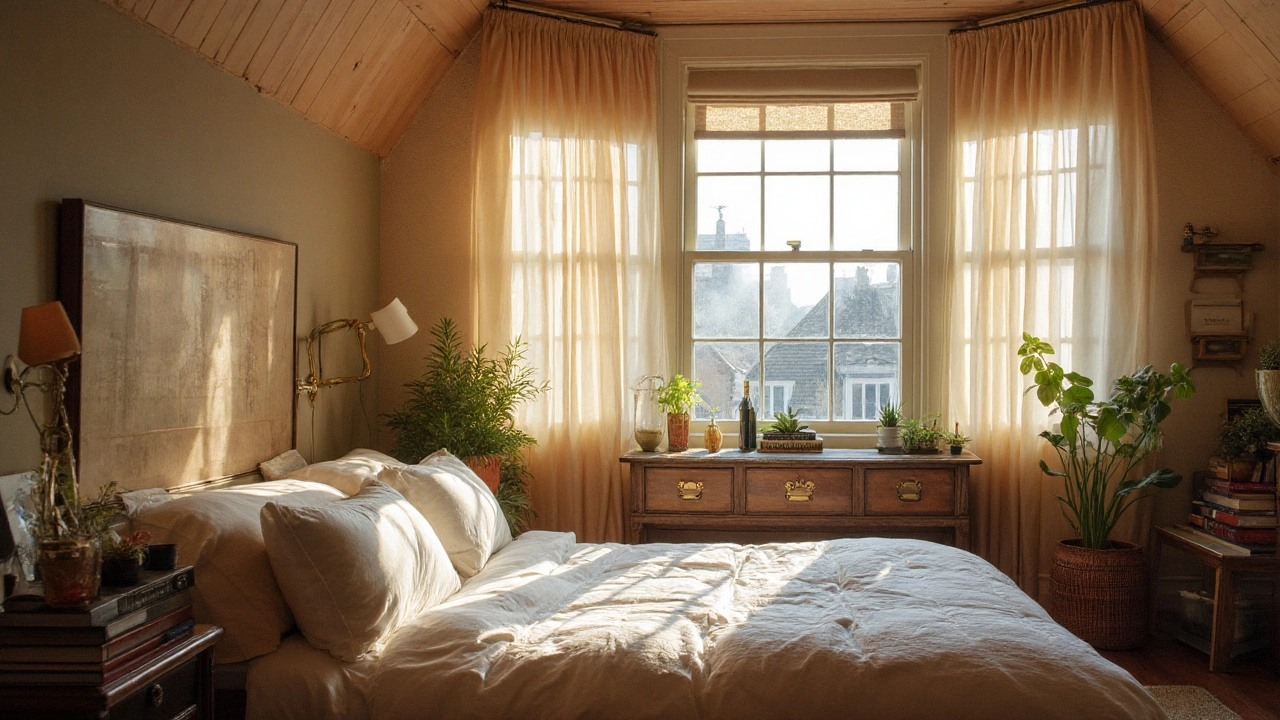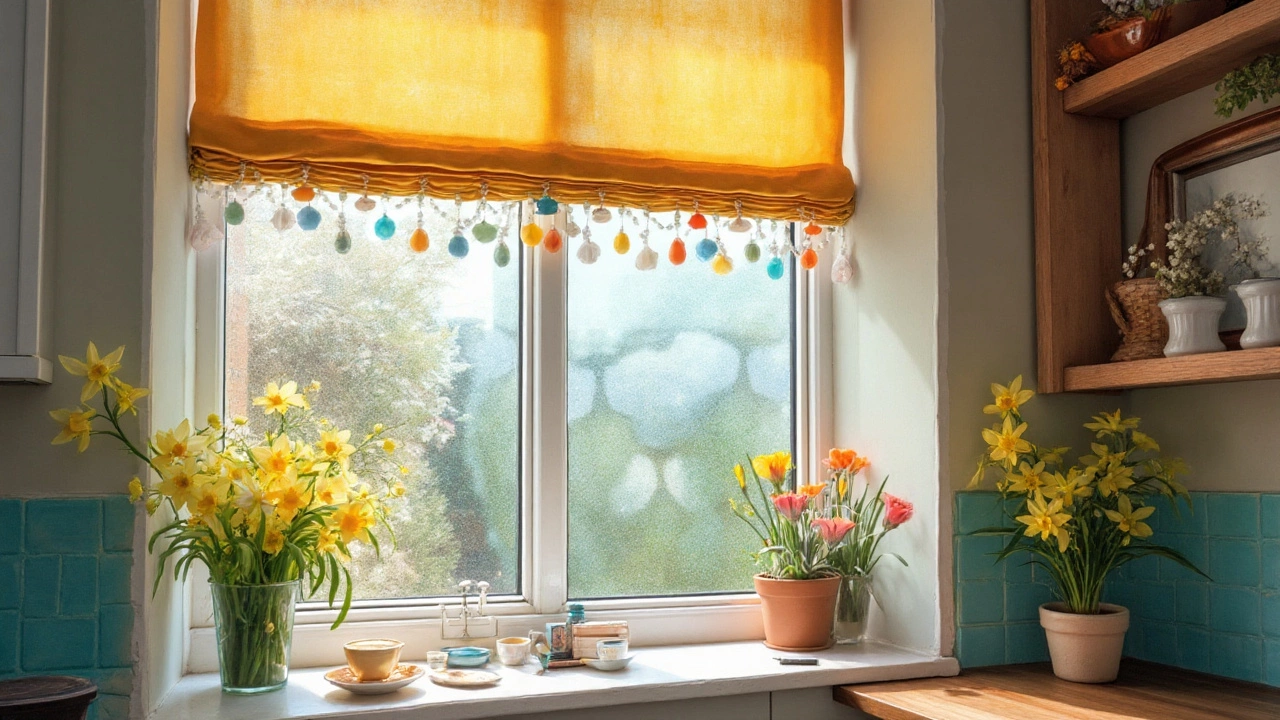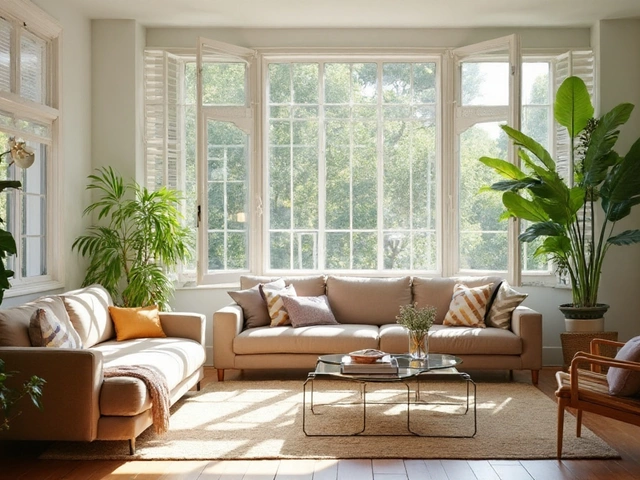When Not to Use Drapes: Practical Design Tips for Every Room

“Not every window deserves a drape.” Sounds odd? But think about all those homes with heavy curtains swallowing up precious sunlight or looking out of place. Sometimes, adding drapes isn’t the solution—it’s actually the problem. You might be wasting money, blocking light you didn’t want to lose, or even making a room look smaller than it is. The truth is, there are spaces and styles where hanging those lovely panels will just not do you any favors.
Why Drapes Don’t Always Work
Let’s skip the part where every design blog tells you, “Curtains add warmth and softness.” Sure, that’s true in a lot of cases. But sometimes, drapes stand in the way of what your room actually needs. For one, many modern homes have large, dramatic windows meant to bring the outdoors in. And if you cover those panes with thick fabrics, congratulations, you’ve just blocked one of your home’s best assets. It’s common in urban apartments and new builds—the kind with massive floor-to-ceiling glass—that natural light and open views are a key selling point. According to the 2023 Houzz & Home Study, over 74% of homeowners doing major updates preferred expanding or exposing their windows to get more daylight. Heavy drapes in that scenario just fight your intent.
Another time drapes just crash and burn: in small spaces. Notice how even a moderate curtain rod and bunching fabric eats up physical and visual real estate? For a compact home office or tiny bedroom, that can make the room feel cramped. It’s not just about the footprint near the window—it creates visual clutter, too, especially if you’re dealing with bold prints or dark fabrics. Minimalism is all the rage these days, especially among young homeowners or those who work from home. The less fussy the room, the better the vibe, and drapes can be the quickest way to kill the streamlined look you’ve worked so hard to build.
Bathrooms and kitchens pose a whole different challenge. Water, humidity, and food messes do not play nice with fabric, no matter how pretty the drapes are. Mold, stains, and lingering smells can turn what started as a soft accent into a health hazard. Plus, fire safety codes (especially in condos and rentals) might actually restrict your fabric window coverings in some spots for a reason. And in both rooms, you generally want maximum light without sacrificing privacy. There are better ways than fighting a soggy, stained drape every few months.
Sometimes, you’re up against architectural features that shout “no drapes, thank you.” Think arched windows, historic woodwork, or quirky spaces with radiators or vents right under the sill. Drapes can cover up gorgeous detail or complicate heating and airflow—something you’ll regret quickly when you go to crank up the thermostat in January. The same goes for French doors and sliding glass doors; standard curtains just don’t hang right, bunch up, and become a tripping hazard. There are specifically engineered products that handle those spaces better.
There’s even an accessibility argument. For folks with allergies or asthma, drapes love to trap dust, allergens, and even pet hair. And not everyone has the time (or patience) to vacuum or launder big fabric panels. Modern window treatments can offer the same privacy options as drapes but skip all the dust-magnet features.
Can drapes hurt your bottom line? In certain climates, yes. Thick, dark fabrics can make small, south-facing rooms overheat—a detail many people notice the hard way after a summer of sweating through Netflix marathons. And if you pile them on in humid climates, they might feel clammy or even start to mildew. Here’s a neat data point: A 2021 study out of Berkeley Lab found that poorly chosen window coverings could throw your cooling costs off by as much as 20% compared to optimized solutions.

Spaces and Styles Where Drapes Aren’t Ideal
Modern, minimalist, and industrial spaces often “reject” drapes both visually and practically. Huge bowls of sunlight pouring in and crisp, clean lines? Drapes can feel clumsy and old-fashioned there. You’re better off celebrating what makes the space unique: vast panes without interruptions, revealed framing, and even steel beams. When designers talk about “letting the bones show,” they mean not blurring the geometry—and drapes will do exactly that.
Let’s talk real life: kitchen windows right over the sink. Who wants spaghetti sauce splashes on their delicate linen? Or a bathroom with a ventless shower? In these zones, high humidity and frequent cleaning needs simply do not mesh with fabric. Too many renters (and landlords) make the mistake of using drapes that quickly get grimy, only to regret it when the mildew sets in or when guests get a whiff of last year’s moisture festering away in the folds.
Kids’ playrooms or nurseries aren’t always suited for drapes either. Dangling cords? Pullable fabrics? That’s a child safety hazard (and most pediatricians will warn you off). There are cordless and fixed options better suited to high-energy zones. Plus, kids are notorious for sticky fingers—try cleaning peanut butter off velvet and see how that goes.
Lofts and converted industrial spaces have their own rules. Those soaring ceilings, exposed brick, or concrete walls beg for a raw look, and thick curtains just scream “out of place.” People often think they’re cosying up the room, but they’re just fighting the very thing that made the place cool to start with. Rolling shades, frosted films, or nothing at all can feel far more appropriate there.
There’s also the issue with pet-friendly homes. Drapes become irresistible climbing frames for cats, a furry hiding spot for dogs, or just a dust-collecting disaster in homes with lots of shedding. Ask any pet owner who’s found their “sheer white drapes” looking more like “dingy white cobwebs” after a single season.
Let’s break down common places and the better choice than drapes:
- Kitchens: Go for wipe-clean blinds or frosted glass.
- Bathrooms: Opt for shutters or privacy glass.
- Small rooms: Try roller shades or nothing at all to maximize space and light.
- Modern open-concept: Consider motorized screens or panels if needed.
- Pet homes: Skip drapes or use washable, short blinds.
| Room | Drapes (%) | Blinds (%) | Shutters (%) | No Covering (%) |
|---|---|---|---|---|
| Living Room | 49 | 34 | 10 | 7 |
| Bathroom | 8 | 61 | 22 | 9 |
| Kitchen | 13 | 53 | 18 | 16 |
| Bedroom | 64 | 27 | 4 | 5 |
| Home Office | 22 | 56 | 11 | 11 |
See that? Drapes barely crack the lineup in kitchens and bathrooms because people (and designers) know the mess just isn’t worth it. Bedrooms, on the other hand, are drape-friendly. Living rooms are a toss-up—you can go minimalist or layered, but what matters is the room’s style and flow.

Smart Alternatives and Winning Strategies
People sometimes stick with drapes out of habit or because they think alternatives are expensive or fiddly. That’s not true anymore. Some of the sleekest solutions are actually easier to clean, last longer, and add loads of personality. Roller shades, for instance, have gotten trendy—choose from translucent solar screens that block glare but keep the view, or blackout options if you need to sleep in darkness. They roll up tight, so you don’t lose your window to fabric.
Blinds aren’t the wimpy aluminum strips they once were. Faux wood, bamboo, or textured vinyl blinds give more style yet still handle steamy rooms, sticky hands, or the random splash of coffee. Good brands now make cordless options, too, which win both design and safety points. And you can get them custom-fitted for tricky windows, from tilt-turns to arched frames.
Frosted window film is amazing for privacy without cutting down light. Peel-and-stick options let even the most commitment-phobic renter test out a new look, and you can peel them off later. This is a favorite hack for bathrooms that look right onto a neighbor’s patio, or for hiding less-than-charming city views. Plus, you never have to wash a fabric panel again.
Have a period home with exquisite woodwork? Go bare, or use tailored inside-mount Roman shades that show off the architecture but still manage privacy. Same goes for those arched or angled windows—custom shades or even simple cellular blinds can work wonders without overshadowing the trim.
Shutters are coming back in style, especially for people who like the cottagecore or classic English look. They handle sun and moisture like champs and are super easy to dust. Plus, they don’t trap odors or turn into pet playgrounds. They tend to last years with minimal upkeep and always look “finished.”
Don’t forget automation. In 2025, you can control window shades with your phone, voice, or a good old-fashioned remote. That means you can ditch clunky drape pulls and position shades exactly where you want for the perfect light, privacy, or heat control. Automated shades are pricier upfront, but the convenience pays for itself, especially for out-of-reach windows.
Want to skip window coverings altogether? If privacy’s not a big deal (here’s looking at you, tenth-floor city dwellers), leaving the window bare can heighten rooms, show off the view, and make everything feel less cluttered. You control the project, instead of your window treatment bossing your design choices. Let the architecture do the talking.
If you love fabric but dread the mess, check out laminated, waterproof, or machine-washable alternatives. Some companies now make drapes with antimicrobial or moisture-wicking properties. But always check the manufacturer’s care instructions—many “machine-washable” drapes shrink or lose their look after a cycle or two.
And here’s a big one: always measure before you buy. So many folks just guess, then wonder why their drapes pool in a tumble on the floor, or why their supposedly blackout curtains leak light at the edge. If you’re set on window coverings, get clear on your priorities—privacy, light, aesthetic—and whether a big swath of fabric actually checks those boxes for your particular window.
To wrap it up: The rules have changed. You don’t have to use drapes every time. In fact, your home (and your sanity) might thank you for being a little creative—or a little ruthless—about saying no. The next time you’re tempted to hang a curtain rod just out of habit, ask yourself: does this window really need drapes? Or is there a simpler, smarter answer waiting on the other side of the glass?
